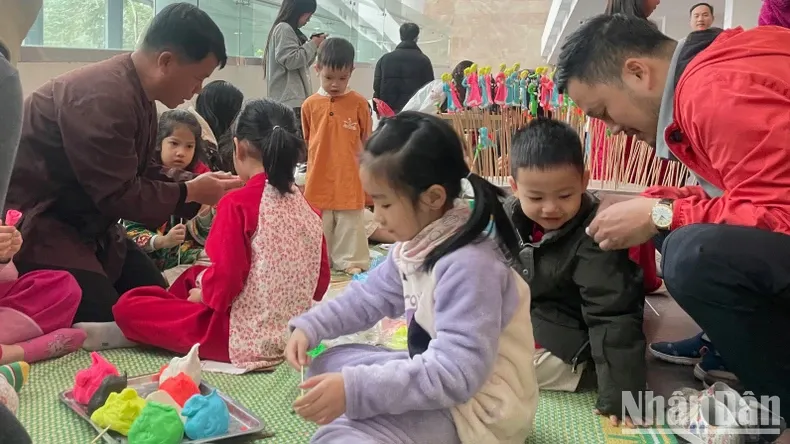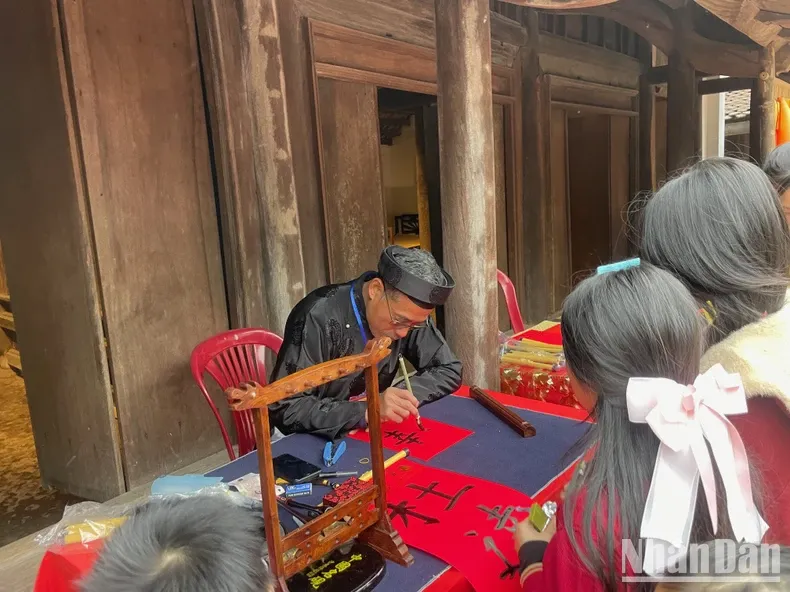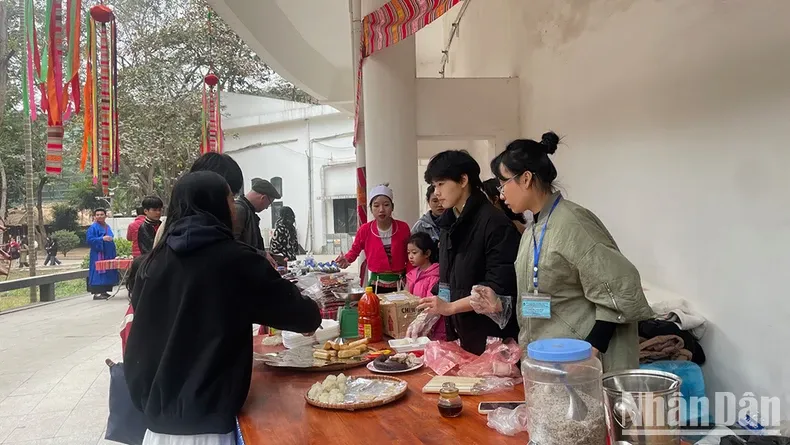Every Lunar New Year, the Vietnam Museum of Ethnology becomes an attractive cultural destination, where the public has the opportunity to immerse themselves in the unique traditional festival space of Vietnamese ethnic groups. The annual “Spring Fun” program not only vividly recreates the beautiful customs and traditions of the traditional Tet holiday but also serves as a cultural bridge, helping younger generations and international visitors better understand the diverse cultural identity of Vietnam.
This article will take you to experience the unique traditional festivals at the Museum of Ethnology, where Tet is not just a festival but also a meaningful cultural exploration journey.
Discovering Traditional Tet of the Muong and Viet People
The “Spring Fun” program at the Museum of Ethnology often focuses on introducing the Tet culture of some typical ethnic groups. Among them, the traditional Tet of the Muong and Viet people is always a special highlight, attracting the attention of many visitors.
The uniqueness of the program is the direct interaction between the public and folk artisans. Coming from Hoa Binh, Hanoi, and many other localities, artisans bring with them the secrets and quintessence of traditional culture, ready to share and guide visitors in experiencing. The event also has the participation of students, creating a vibrant and youthful festival atmosphere.
Visitors to the museum during this occasion will be immersed in the colorful Tet cultural space, from learning about the meaning of the Neu tree on Tet day and the custom of making Chung cake to cultural and artistic activities such as calligraphy writing and Dong Ho folk painting printing. Each activity contains profound cultural values, reflecting the spiritual and religious life of the Viet and Muong people.
Raising the Neu Tree and Making Chung Cake – Convergence of Tet Culture
One of the unmissable experiences when visiting the Museum of Ethnology during Tet is participating in raising the Neu tree and making Chung cake. These are two customs imbued with the Tet culture of both the Viet and Muong people, although there are unique features, they still show the convergence and similarities in traditional culture.
The Neu tree, a sacred symbol of Tet, is erected with the desire to ward off evil spirits and welcome a peaceful new year. At the museum, visitors will witness artisans guiding how to erect the Neu tree according to the traditional rituals of each ethnic group.
Besides, making Chung cake is not only an opportunity for everyone to prepare traditional Tet dishes together but also a chance to learn about the cultural and historical significance of Chung cake in Vietnamese cuisine. Visitors will learn how to make square and beautiful Chung cakes and hear interesting stories about the origin and legend of Chung cake. In particular, comparing the way the Viet and Muong people make Chung cake will bring interesting discoveries about the diversity of Vietnamese culinary culture.

Folk Games – Tet Playground
The Tet atmosphere at the Museum of Ethnology becomes even more bustling and attractive with traditional folk games. This is not only an entertainment activity but also a way for visitors, especially children, to learn about folk culture, practice health and dexterity.
The games are organized in a diverse and phong phú (rich and varied) manner, suitable for all ages, from physical games such as tug of war, “co bung”, “dap phu phu”, chicken feather badminton, “danh mang”, top spinning, “nem pao”, “tung con”, stick pushing… to creative activities such as coloring to discover Hoa Binh cultural heritage, coloring 12 zodiac paintings, and making “to he” (toy figurines made of glutinous rice powder). Each game is imbued with national cultural identity, associated with stories, legends, and profound humanistic meanings.
Participating in folk games, visitors not only have moments of fun and relaxation with family and friends but also have the opportunity to interact and connect with people who share the same interests, discovering the beauty of traditional culture.

Applying Technology in Festivals – New Experiences
To refresh experiences and attract young people, the “Spring Fun” program at the Museum of Ethnology also focuses on applying technology to festival activities. This not only creates attractiveness and novelty but also helps to convey information and knowledge about culture in a more vivid and effective way.
Some outstanding technology application activities include: “Overcoming challenges to discover Tet At Ty”, “Year of the Snake tour to learn about snakes in the Museum”, “Experience drawing snakes and understanding their meaning”… These activities use interactive technology, virtual reality, and gamification to create challenges and puzzles related to Tet culture and artifacts displayed at the museum.
By participating in these activities, visitors, especially young people, can access traditional culture naturally and excitedly, no longer feeling dry or boring. This is a creative direction, helping to preserve and promote the value of traditional culture in the digital age.

Conclusion
Experiencing traditional ethnic festivals at the Vietnam Museum of Ethnology is a meaningful cultural journey, taking visitors to discover the unique beauty of Vietnamese Tet. From learning about customs and traditions, participating in traditional activities to new technology experiences, the “Spring Fun” program brings a complete, colorful, and emotional Tet space.
This is not only an opportunity for fun and entertainment but also an occasion for everyone to love, cherish, and be proud of the traditional cultural values of the nation. Come to the Vietnam Museum of Ethnology to experience a meaningful spring and discover the unique traditional festivals of Vietnamese ethnic groups!